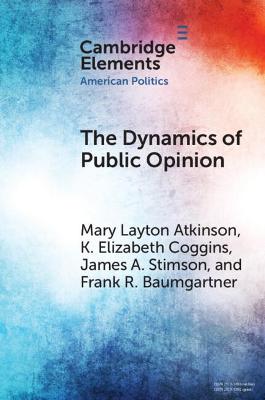Elements in American Politics
2 total works
Much of the science of public opinion focuses on individuals, asking if they perceive or misperceive and why. Often this science will emphasize misperceptions and the psychological processes that produce them. But political debates have outcomes in the aggregate. This Element turns to a more systematic approach, emphasizing whole electorates and examining facts through a dynamic lens. It argues public opinion will converge toward truth over time and frequently finds correct views of facts grow stronger under information flow, while misperception recedes.
The Dynamics of Public Opinion
by Mary Layton Atkinson, K. Elizabeth Coggins, James A. Stimson, and Frank R. Baumgartner
Published 20 September 2021
A central question in political representation is whether government responds to the people. To understand that, we need to know what the government is doing, and what the people think of it. We seek to understand a key question necessary to answer those bigger questions: How does American public opinion move over time? We posit three patterns of change over time in public opinion, depending on the type of issue. Issues on which the two parties regularly disagree provide clear partisan cues to the public. For these party-cue issues we present a slight variation on the thermostatic theory from (Soroka and Wlezien (2010); Wlezien (1995)); our “implied thermostatic model.” A smaller number of issues divide the public along lines unrelated to partisanship, and so partisan control of government provides no relevant clue. Finally, we note a small but important class of issues which capture response to cultural shifts.

